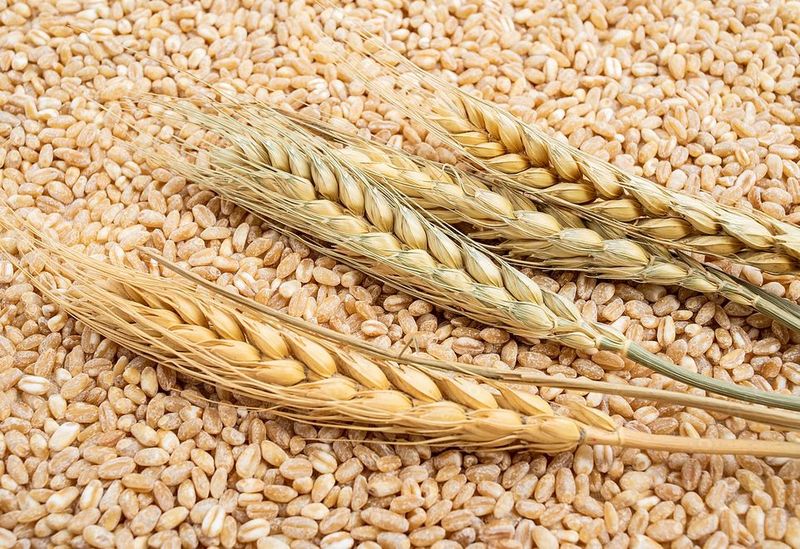Insight – Australian exporters to benefit from long-term increase in global demand for wheat

Australian exporters can expect to benefit from the rising demand for wheat. Australian exporters have existing trade relationships with several growth markets.
The OECD-FAO expects global wheat demand to increase by 11% over the next decade. This will be driven by:
- a global population increase of 800 million (0.9% average annual growth)
- use of wheat as animal feed, particularly in Asia where meat consumption is rising
- demand for biofuels, both directly as a source of ethanol, and indirectly as other food sources are diverted towards biofuel production.
Much of the demand will come from developing countries in Asia. Most of them will need more imports from major grain producers, such as Australia.
Figure 1: OECD-FAO forecast for wheat consumption and international trade statistics to 2031\
Australia is a preferred grain supplier to several growth markets. These include Indonesia, the Philippines and Vietnam. Australian wheat is less well established in other growth markets, including Egypt, Nigeria and Ethiopia. However, these markets typically offer lower prices and incur higher shipping costs due to their distance from Australia.
Increased wheat production in Russia will increase competition in global markets. Competition will be sharper if Russian farmers can produce higher-quality wheat suitable for food manufacturing. However, the longer-term implications of the conflict with Ukraine may limit Russia’s export capacity.
Two factors are most likely to cause deviations from OECD-FAO projections. These are lower output from major producers and higher than expected increases in demand for animal feed or biofuels.
Wheat is the most traded cereal in the world, with 24% of global production entering international markets. By 2031, the OECD-FAO expects an extra 28.1 million tonnes (MT) of wheat to be exported (15% of the current export volume).
Global wheat consumption is forecast to rise by 11%. India, China, Pakistan and Egypt are expected to account for approximately half of the increase in world consumption. Large demand increases are also expected in Africa (Nigeria +29%, Ethiopia +22%) and ASEAN (Vietnam +21%, Indonesia +17%, Philippines +19%).
Some countries, such as China and India, are likely to meet increased demand through local production. Countries without large-scale wheat production, including Egypt, Nigeria, Indonesia, Philippines, and Vietnam, are all expected to increase wheat imports by more than 1 MT per year by 2031 (see Figure 2).
World production is expected to increase by 70.4 MT. India, Russia and Canada are expected to account for 55% of the increase in world wheat production. Increased production in Russia and Canada will be largely export-focused. Conversely, 89% of increased production in India will be consumed locally.
Australian wheat exports are expected to increase by 1.5 MT by 2031. This is up 8% from the 2019 to 2021 average of 19.5 MT. Australia is estimated to account for 5% of the total increase in global exports. Australian exports will be most sought after in Asia, due to demand for high-quality, protein-rich wheat used to make noodles and other processed food products.
Figure 2: OECD-FAO forecast for global wheat imports 2019–2021 average and 2031
Long-run projections provide useful insights; however, researchers face numerous challenges. Russia’s invasion of Ukraine shows how unexpected events can cause substantial disruptions to production and trade. The potential for ongoing conflict and rising input costs, especially fertiliser, are likely to affect production in the short term.
Russia, India, Canada and Australia make up most new production. Increased production in Russia and India will require the continued modernisation of their cropping industries. Severe droughts are currently affecting North American grain production. Meanwhile, the 2022–23 Australian wheat crop looks set to easily surpass the OECD-FAO projection of 20 MT.
Like farmers in Australia, North American farmers must continue to adapt to new climate conditions. These conditions have increased risks and reduced annual average farm incomes (ABARES 2022).
The OECD-FAO expects demand for animal feed and biofuels to be relatively stable as a proportion of cereal demand over the next decade (see Figure 3). Read more about how biofuels and rising incomes impact grain and oilseed demand.
This is the most likely scenario. However, changes in meat demand from countries with high populations and increasing wealth, such as Vietnam, India and Pakistan, could drive substantial increases in animal feed demand. The number of cattle, goats and pigs in Vietnam has already doubled since 1990. However, per-capita meat consumption remains at only 59% of Australia’s consumption level.
Government biofuel policies in large fuel-consuming countries, such as the US, EU and China, have an important impact on global biofuel demand. These policies are hard to predict, which complicates efforts to model future biofuel demand. For example, the US Inflation Reduction Act is likely to increase demand for biofuels. However, the Act was signed into law after OECD-FAO Outlook was published. Wheat is unlikely to be a major direct source of biofuels. However, if other food crops are diverted to biofuels, the demand and price for wheat will also rise.
Figure 3: OECD-FAO forecast for global wheat use 2016–2031
Each year, the Organisation for Economic Co-operation and Development (OECD) and Food and Agriculture Organisation (FAO) publishes the Agricultural Outlook. The outlook assesses world food supply and demand expectations and highlights the economic and social trends driving global agricultural commodity markets.
The Australian Government’s network of Agriculture Counsellors provided information for this article. More information about the Agricultural Counsellor network, including contact details, is available on the Department of Agriculture, Fisheries and Forestry Website.
Read also
Wheat in Southern Brazil Impacted by Dry Weather and Frosts
Oilseed Industry. Leaders and Strategies in the Times of a Great Change
Black Sea & Danube Region: Oilseed and Vegoil Markets Within Ongoing Transfor...
Serbia. The drought will cause extremely high losses for farmers this year
2023/24 Safrinha Corn in Brazil 91% Harvested
Write to us
Our manager will contact you soon






